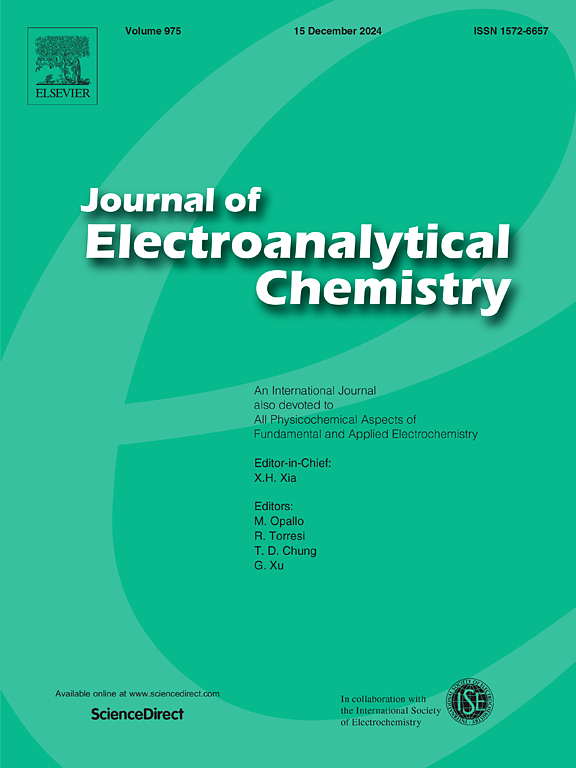Defects-engineered build in a Molecule-Based trinuclear iron cluster material as anode materials for lithium-ion batteries
IF 4.1
3区 化学
Q1 CHEMISTRY, ANALYTICAL
引用次数: 0
Abstract
The design of electrode materials for rechargeable batteries is crucial in advancing renewable energy technologies. Herein, a defect engineering strategy is proposed to introduce point defects, providing extra Li storage sites and improving the intrinsic electron/ion transfer rate and reaction kinetics in the [Fe3O(CH3COO)6(H2O)3] cluster (referred to as Fe3). Theoretical calculations revealed that heteroatom doping decreases the band gap of [Fe2.985Mn0.015O(CH3COO)6(H2O)3] (designated as Fe2.985-Mn0.015), induces greater redox activity, and results in higher conductivity. The Fe2.985-Mn0.015 material shows a superior rate capability and a high specific capacity of 1071.9 mAh g−1 after 200 cycles at a current density of 0.1 A/g when used as an anode in lithium-ion batteries (LIBs). The exceptional electrochemical performance is attributed to the activated Li reaction involving mixed valence metals and –COO− groups, as evidenced by ex situ X-ray photoelectron spectroscopy, ex situ Fourier transform infrared spectroscopy, and in situ electrochemical impedance measurements. Additionally, the improvement in the electrochemical performance indicates that electron redistribution after Mn2+ doping significantly contributes to increased reaction kinetics. This research opens new possibilities for designing molecule-based materials with structural defects and superior performance in anode material applications.

求助全文
约1分钟内获得全文
求助全文
来源期刊
CiteScore
7.80
自引率
6.70%
发文量
912
审稿时长
2.4 months
期刊介绍:
The Journal of Electroanalytical Chemistry is the foremost international journal devoted to the interdisciplinary subject of electrochemistry in all its aspects, theoretical as well as applied.
Electrochemistry is a wide ranging area that is in a state of continuous evolution. Rather than compiling a long list of topics covered by the Journal, the editors would like to draw particular attention to the key issues of novelty, topicality and quality. Papers should present new and interesting electrochemical science in a way that is accessible to the reader. The presentation and discussion should be at a level that is consistent with the international status of the Journal. Reports describing the application of well-established techniques to problems that are essentially technical will not be accepted. Similarly, papers that report observations but fail to provide adequate interpretation will be rejected by the Editors. Papers dealing with technical electrochemistry should be submitted to other specialist journals unless the authors can show that their work provides substantially new insights into electrochemical processes.

 求助内容:
求助内容: 应助结果提醒方式:
应助结果提醒方式:


